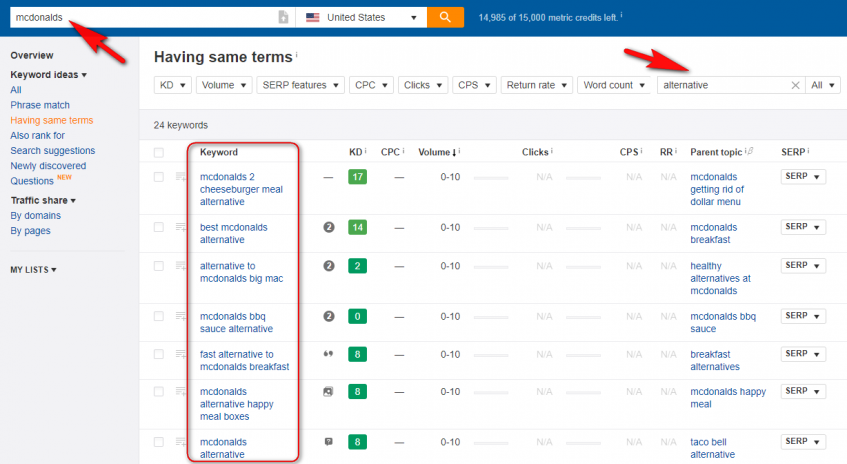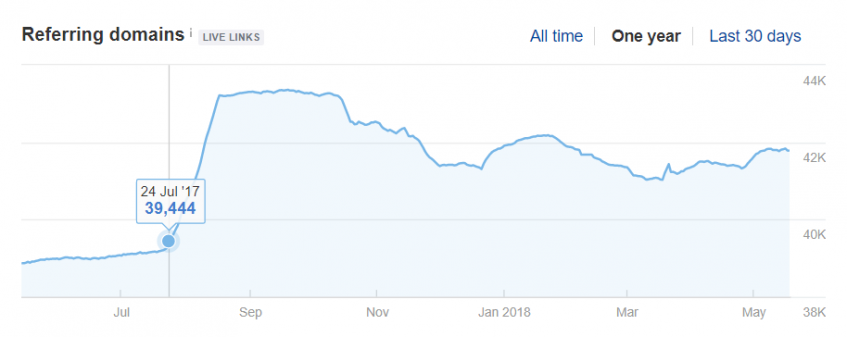
Learn from Your Competitors to Outrun Them
Editor’s note: This is a guest post from Helen Stark, Content Marketer at Ahrefs.
A rivalry is inevitable in business. And digital marketers often use the ‘steal from your competitors’ tactic. I suggest you learn from your competitors instead.
Of course, any unethical techniques are a big “no-no”! In marketing, like in sports, if you wish to win in the long run, you must respect your rivals. And win the game! Let’s check out the best techniques you can use for analyzing your competitors.
Find out Who Your Competitors Are (If You Still Haven’t)
Being aware of who you compete with is the cornerstone of competitor analysis. Most eCommerce websites already know their “direct” competitors. Those are the businesses that sell the same products. It’s a bit harder to find your “indirect” competitors – those, who sell products in different niches. Thus, if you sell running shoes, you may take a closer look at the online stores that sell shoes in general.
It’s easier to use advanced SEO tools to get the list of your competitors. You can just drop your website’s URL there and see the ‘Competing domains’ list.
You can also make use of a good-old Google Search Console. Extract your top keywords from it. Then you check out the Google’s Top10 for those keywords and create a list of the most prominent competing domains you see there.
Piggyback Their Keywords
The problem here is that you cannot get into the competitor’s Search Console to find out what keywords help them climb to the Top of the SERP. But you can use advanced SEO tools that allow you to check out the competitors’ keywords. Choose only those keywords that help your competitors occupy positions from 1 to 10. They will be your main target.
There’s a trick that allows you to piggyback the competitors’ keywords and even intercept their customers before they make a purchase from them. You just have to take a closer cook at the competitor branded keywords that also include such words like “compared to,” “alternative,” “better,” “cheaper,” “vs.” etc.
Then create landing pages or other types of content optimized for those keywords. Run a couple of Google AdWords campaigns targeting these phrases. Before purchase, customers often look for comparison or a cheaper/faster solution than that your competitors offer. So, the chances are you will make users change their mind and buy from you instead of your rivals.


Listen to the Competitors’ Audience
Customers are a great source of information about your competitor. You can legally track the activity of your competitor’s customers across different channels. Check out the social media pages your competitors run and read users comments. Pay closer attention to what they say about their website performance, their service, product, etc. Monitor what new features or products they would like to see. 59% of customers share their negative experience with a brand online. So, check out negative comments as well. They may also give you some food for thought.
Check out comments users leave for the competitors’ blog articles. Thus, you can understand what topics are the most relevant to them and try to offer similar (but more valuable) content for your audience. You may also subscribe to their newsletter to check out their email campaigns from the inside.
To save your time, monitor only those channels that bring your competitors the most of the traffic flow. SimilarWeb toolbar can help you with this. Its “Sources” tab shows the distribution of traffic between direct, social, email and other channels.


Monitor Competitors’ Brand Mentions
Online reputation is another key to success that requires a solid strategy. You can also learn a lot from your competitors here. Start tracking competitor’s brand mentions to learn what people say about them. You can use various tools to monitor the mentions of competitors’ brand.
Brands can easily control what users say about them on corporate blogs, social media pages, emails. Thus, brand mentions on “independent” sources may provide you with more unbiased info about your online rivals.
Moreover, mentions are an excellent source of inspiration for your own blog and social pages. You can see what content your competitors create – and craft yours, a better and more sophisticated one.
Build Links from the Same Sources
Backlinks are considered to be one of the major ranking factors as Ahrefs research for on-page SEO claim. No wonder that link building is a focal point for all marketers. Trust me, your competitors are building links non-stop, so you have to get even more backlinks to succeed.
Monitor the websites your competitors get their backlinks from and build yours from the same sources. Use guest posts and outreach campaigns to attract influencers and persuade them to give you a link back to your website. Check out the periods when they build links the most actively. Usually, when the referring domains graph shows a sudden jump over a short period, it may signify that your competitors were building links actively.


The Bottom Line
Create a spreadsheet where you will be gathering the data you’ll learn about your rivals. It should help you to understand what areas of your marketing strategy need improvement.
Competitive analysis is an ongoing process. Your online rivals are not resting on oars and may track your strategies and tactics as well. So, you should stay aware of their marketing activities. It doesn’t mean that you should only follow the strategies of your competitors. Pay attention to what makes you unique and always try to fulfill the customers’ expectations.






